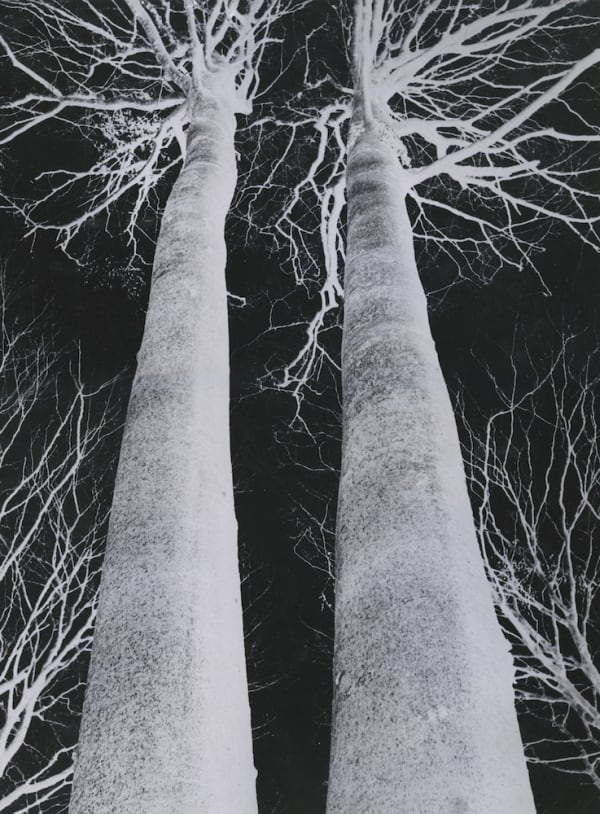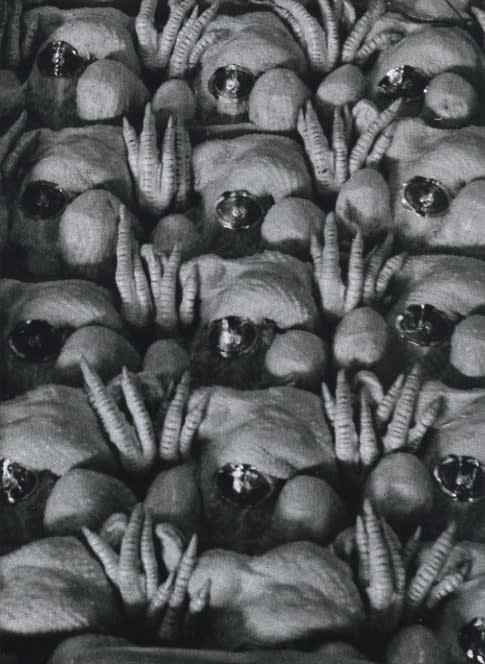Romain Urhausen: A Subjective Consciousness
Les Douches la galerie is pleased to present the work of Romain Urhausen (1930-2021), through a selection of some forty vintage prints, representative of his experimental approach.
-

Au cœur de la conscience de Romain Urhausen
Lucie Guillet, Fisheye, 17 May 2023 -

La réalité augmentée du photographe Romain Urhausen
Emmanuelle Lequeux, M, le magazine du Monde, 24 April 2023 This link opens in a new tab. -

Romain Urhausen – Une conscience subjective / Jean-Claude Gautrand – L’assassinat de Baltard
Frédérique Chapuis, Télérama Sortir, 18 April 2023
Vast, but also little known in France, the photographic works of the artistic pioneer from Luxembourg, Romain Urhausen (1930-2021) are marked by his singular style, a mixture of the French humanist school and the German subjective school of the 1950s and 60s, to which he actively contributed. Often a pretext for formal and poetic exploration, his photographic subjects, tinged with humour, go beyond a classical representation of reality. He brings an experimental, artistic approach to bear on daily life, a man at work, an urban landscape, a nude or a self-portrait. The subjective aesthetic he learned from Otto Steinert marked his formal language, his way of treating contrasts and composition, but also his way of looking differently at the world. In 2022, the Rencontres d’Arles dedicated a retrospective to him called, In His Time; the catalogue was published by Delpire & Co. Those in Paris will be able to discover his infinitely protean work at Les Douches la galerie, from 6 April through 27 May.
Interview with Paul Di Felice
Exhibition curator, art critic
In a few words, how would you describe the work of Romain Urhausen?
When you talk about Roman Urhausen’s work, you must be careful to mention that he was not only a photographer, but also a designer, architect, filmmaker, and so on. Now, if we’re talking about just his photography, I consider the period from the 1950s up to the early-1970s his most productive. In his home country of Luxembourg, he was a pioneer of subjective photography after his time as a humanist photographer.
What were his artistic influences?
In photography, definitely the French humanist photographers of the 1940s. But he was very interested in art in general, particularly painting. He was in contact with many artists, particularly abstract ones and those who worked in gestural painting, both in Germany, where he lived for a while, and France. He also made sculptures; in fact his first compressions date from the 50s. He was really very creative and productive.
Did the fact that he was also an architect and designer have an impact on his choices in photography?
Yes, absolutely. There’s a whole series of photos he took at industrial sites, and in some German cities, especially in Saarland, where he was very interested in the structure of the buildings themselves. In his photographs you see urban space and everything related to architecture.
Are there recurring themes in his photographic work?
Yes, the theme of industrial structures that I just alluded to is obviously a part, but only for the period spanning the 50s and 60s. On the other hand, nudes were a constant in his work, all the way up to the 2000s. But there he went from subjective aesthetics to a more contemporary style. He was never interested in traditional nudes, but in the experimental forms around nudes.
How did he treat real, everyday life?
Romain Urhausen was very curious and open. He had a sense of composition and aesthetics. Daily life is very present in his work, but he sublimates it through his art.
The title of your essay that appeared in the catalogue to the exhibition that was dedicated to him at the Rencontres d’Arles 2022 is Romain Urhausen – A Cross Between Humanist and Subjective Photography. If you had to choose one end of the spectrum, which would it be?
Definitely subjective photography. In daily life, which is necessarily banal, he sees other things than common mortals could glimpse. He always said that it was thanks to the teachings of Otto Steiner, the great master of German subjective photography, that he was able to form his way of looking. That’s why I think the scales tend to tip towards that side.






